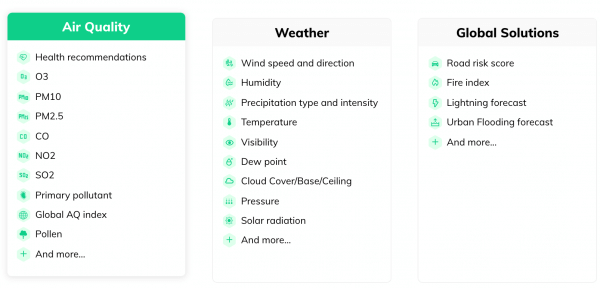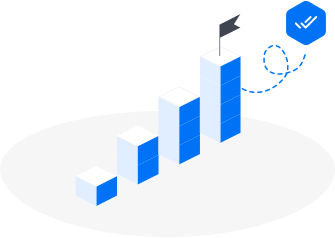For enterprise businesses, the benefits of having access to hyperlocal air quality data are massive. Whether for consumers or businesses, the use cases are vast from smart homes and healthcare to wearable devices, transportation, employee and fan safety.
But the air quality industry has a problem, especially when it comes to hyperlocal data and actionable insights. The problem is most air quality tracking does not include hyperlocal weather data, and what that means is that businesses and consumers are only getting a piece of the puzzle.
Take a general air quality index reading for example in any given location. Regardless if you can see 5 km, 3 km or 1 km down to the street level, what you’re seeing is simply a snapshot frozen in time of an air quality reading. What you’re missing is what’s happening in real-time based on how surrounding weather impacts air quality.
Consider dynamic hyperlocal wind patterns shifting from one direction to another blowing good or bad air quality in a different direction. Or wind speeds increasing or decreasing blowing various levels of air quality different distances along a particular route. The updates and recommendations people need to receive in advance and in real-time to stay safe are dependent on the impact of hyperlocal weather conditions. Winds vary from street to street, and we’ve already seen the benefits of hyperlocal impactful weather data for companies like Uber, the New England Patriots, jetBlue, National Grid, Porsche, Ford, and more, we know it works, and air quality is no different.
Another weather parameter to consider is precipitation. How can you truly measure air quality if you’re not also taking into account hyperlocal precipitation? Sourced directly from NOAA, “rain typically results in less pollution since it washes away particulate matter and can also wash out pollutants that are dissolvable.” We’ve seen real life examples where it’s raining heavily for 10+ hours, yet some air quality solutions show poor air quality with significant amounts of particulate matter (which is quite literally impossible). This is what happens when you model AQI without real time and hyperlocal precipitation. If you need hyperlocal air quality then you need hyperlocal weather to drive it, taking into account all of the influencing weather and external parameters as pictured below:

It seems obvious when you ask yourself the question. Does the wind impact air quality at a hyperlocal and community level? Of course it does, so how can solutions that are using low resolution weather data offer their customers or employees accurate and actionable air quality insights?
They cannot.
And while precipitation and wind are some of the more obvious influencers of air quality, there are a number of other weather parameters impacting air quality. Warm and cold temperatures impact air quality, wildfires, flooding, and more.
So as you think about your next iteration of leveraging an air quality api and/or air quality data, stop and think about where you are in the process and ask yourself any of these questions.
- If you already have an “air quality” solution, ask yourself how historical, real-time, and forecasted hyperlocal weather data is being leveraged with your offering
- if you’re considering an air quality solution, get a clear understanding of how hyperlocal weather data is being used for air quality outputs
- If you’re just getting started in understanding the state of the air quality industry, start by Googling “how weather impacts air quality” and see for yourself
Don’t take it from us though, simply note how industry leaders like Porsche use hyperlocal weather data + air quality with Tomorrow.io’s all-in-one solution to give drivers the most comprehensive and safe experience on the road. With Tomorrow.io, you get the whole package. Hyperlocal, high resolution, weather and air quality.
To learn more and see how you can get the most out of Tomorrow.io’s air quality API, talk to one of our experts today!

















